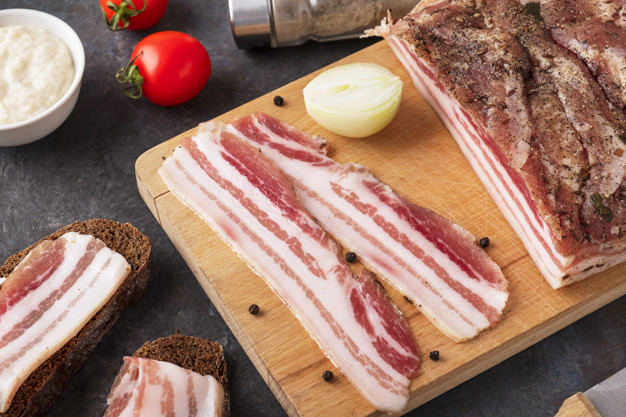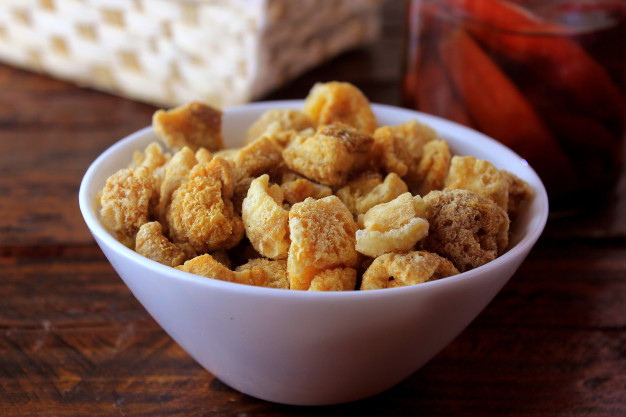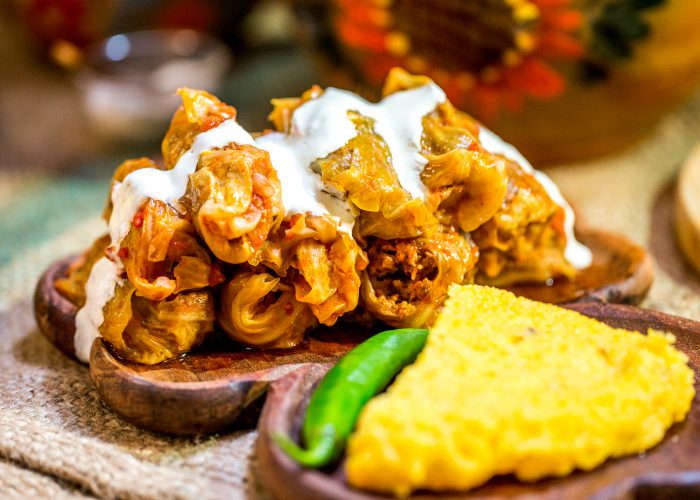Romanians are very fond of their traditions, especially the ones focused around the two most important celebrations of the year: Easter and Christmas. It is in our habit to make a feast of all major religious celebrations, thus, it is no wonder why we love winter and cannot wait for the Christmas holiday.
They say that if you want to experience the richest foods Romania has to offer, it is best to visit it during winter when you can enjoy a truly authentic culinary experience.
Associated with a lot of foods and ancient customs that have been passed down from generation to generation, Christmas is synonymous with a lot of joyous moments: carols songs, the gifts received from Santa Claus, three holly days spent in the family, all members gathering around the table, enjoying traditional foods and waiting for a new year to come.
But a habit that is less known across borders is what happens a few days before Christmas: the traditional act of sacrificing pigs on Ignat Day.
What is Ignat Day
Celebrated each year on the 20th of December, Ignat Day is a religious celebration dedicated to the Holy Martyr Ignatius Theophorus, and it is associated with a practice that takes place especially on villages scattered around the country: the ritual of slaughtering the pigs. The source of this ritual lays in the abundance of meat and traditional foods prepared for holiday meals. Some of these dishes are carefully preserved and can be consumed until close to summer.
On this day, men wake up early and prepare everything for animal sacrifice. The pig is slaughtered by stabbing with a knife. The entire blood is drained and set aside. Afterward, the animal is scorched, washed with hot water, and covered with a blanket. Children ride on the pig, in order to be lucky all year round. Later, the intestines and entrails of the pig are removed, the meat is cut and the traditional products are being prepared.
Traditional Christmas foods in Romania
1. „Pomana Porcului” / Pork’s Charity
On Ignat Day, people make „Pomana Porcului” (Pork’s Charity), which is traditionally cooked in a cauldron. The dish consists of a variety of pork bits (pork belly, shoulder, liver, or kidneys), served with a garlic sauce and polenta. The traditional food is to be served with all members of the family, but also the neighbors and the close relatives.
2. „Caltaboș” / Sausages made from pig organs
In different regions of Romania, these sausages are also called „cartaboș”, „chișcă” or „călbaj”. It is a local specialty made of pig entrails (liver, spleen, kidneys, heart). These entrails are boiled and passed through the mincer.
The recipe for these sausages varies from region to region. In some parts, the sausages are very fatty, while in others, people tend to use lean meat. Additive ingredients can also vary, some housewives prefer to add rice to the composition, while others don’t. The taste of the product depends on the mix of spices used.
3. „Sângerete” / Blood Sausages
Sângerete is another popular traditional Christmas product that originated in Transylvania. It is a traditional blood sausage, juicy and with an exquisite flavor. Basically, the blood kept from the slaughter of the pig is mixed with pork fat, meat, pork rind, bread, and spices. The product can also contain boiled rice as a filler, and it is usually seasoned with thyme, garlic, coriander or nutmeg.
4. „Lebăr” / Liver Sausages
Another type of sausage, the so-called „lebăr” consists of mostly pork liver boiled along with other pig entrails (lungs, goose, pork fat, heart, kidney), mixed with spices. All meat is boiled and minced, then a clean pork intestine is filled with the composition. The sausage is stored in a cold place for the winter to come.
5. „Toba” / Head Cheese
Among the traditional dishes that fill the Romanians’ meals during Christmas time is also the one named „tobă”. The composition is based on boiling the pig’s organs such as ears, kidneys, tongue, heart, muscle, bacon, and pork leg, season these with salt, pepper, and bay leaves. Afterward, all meat is chopped and mixed with smashed garlic, salt and ground pepper, and two tablespoons of the juice in which they boiled are added to it. This composition is then introduced into the pig’s stomach.
Before that, the pig’s stomach was well cleaned of its inner membrane, rubbed with coarse salt, washed properly, and left for an hour in water with vinegar and sliced onion, in order to neutralize the smell.
6. „ Cârnați de porc” / Traditional Romanian Pork Sausages
Pork sausages are among the first products made immediately after slaughtering the pig. These can be kept throughout the cold season in the pantry. The recipe for pork sausages differs from one region to another. Each Romanian region has its specificity, but the great taste of the end-result is what binds them all.
All you need to make these traditional pork sausages is fatty pork meat, freshly cleaned pork intestines and spices: garlic, salt, pepper, sweet paprika, thyme, and meat soup with bones.
The pork meat is properly washed, chopped, and set aside. Secondly, the mix of spices is prepared. Thirdly, the meat is enriched with the spice mixture. One head of the pork intestine is placed on the funnel of the mincer because this is how the sausages are formed.
7. „Slănină de porc” / Pork Bacon
Bacon is loved worldwide and in Romania, we have our own way of doing it. From the back of the pork, men split on the spinal cord and they remove two „plates” of bacon from each side. The bacon plates are left in the cold until the next day, usually hanging in a pantry, in order for it to harden. The next day, men portion the bacon and start preparing it.
Portioning the bacon is a matter of personal choice, usually about as wide as 25-30 cm long. Afterward, the bacon needs to be left to brine. Usually, the bacon slices are covered in large and coarse salt, with the option of adding freshly ground spices, such as pepper, hot pepper, thyme, allspice, coriander, rosemary, etc. The bacon needs to sit about 3 or 4 weeks in salt, to soften well.
Another method used to brine the bacon is by employing a mixture of water and salt. This mixture has to be saturated, meaning that a fresh egg has to float in the water. Only then, the bacon is slipped into the water and left there to soften.
Careful, however, because the water needs to be changed daily until it remains white and clear. At first, the water will be red, because of the blood coming out from the bacon. In time, it will remain white and clear.

Smoked bacon
Homemade bacon can be also smoked, but using only cold smoke, over a smoldering fire, with hardwood sawdust or fruit tree. After this process, the bacon needs to be kept in the cold, but away from dust or insects.
8. „Șorici de porc” / Pork Rind
Pork rind is another favorite among the traditional delicacies prepared in the winter holiday. It is best served soft when it’s freshly cut.
After the pig is scorched, the rest of its hair is removed with the back of a wide knife. Then, the animal is rubbed with a lot of salt, soaked in cups of boiling water. Each time, men scrap the pig’s skin with the knife blade, until the rind becomes pink-white and clean. The rubbing in salt will help the rind and the bacon under it become more tender.
The softest and thinnest rind is on the pork’s belly. Men usually skin it using only two fingers rolled in salt.
9. „Jumări” / Pork Greaves
In order to obtain pork greaves, all you need is bacon and water. More precisely, the bacon is cut into smaller pieces and melt in a pan with a thick bottom if you live in the city, or in a cauldron if you live in a village. Allow it to simmer until the bacon starts to melt, then dim the heat and stir constantly. In this way, the greaves will melt evenly and the lard will have a lighter color.
Romanian greaves are usually served as aperitifs with lots of bread with lard and onions.

10. „Untură de porc ” / Pork Lard
The lard is obtained at the same time as the pork greaves. Strain the lard from the leftover of the greaves and simply store it in jars. Wait for the lard to cool off and harden, then close the jars with the lids and keep it in a cold pantry.
11. „ Carne la garniță” / Lard steak kept in a jar
Frying in lard is healthier than frying in oils, scientists claim. There is a reason why Romanians like to keep lard in a jar: it can be used to fry eggs, potatoes, pork meat, and it works just as well even in cookie recipes.
Another Romanian specialty made around Christmas is „carnea la garniță” or the lard steak that is later kept in a jar and is ready to eat at any time. All you have to do is take out the pork bits and warm them up in a frying pan so that the lard melts and heat the meat. Sausages can also be stored in a jar with lard.
A pork leg is chopped in pieces of 4-5 cm and seasoned very well with the favorite spices, in a deep pot. A tablespoon of lard is added and the meat is left for cooking around an hour. At the end, simply put the meat pieces in a jar, cover them in lard and lock the lid. No need for a fridge, just a colder pantry would be enough for long-term storage.
12. „Piftie” / „Răcituri” / Pork Jelly
Traditionally, the dish named „piftie” or „răcituri”, depending on the Romanian region, consists of smoked pork leg in aspic, seasoned with plenty of garlic. To obtain this dish, one only needs 4 ingredients: pork meat, water, salt, and garlic. And a lot of time for boiling them thoroughly.
13. „Ciorbă de burtă” / Tripe Soup
Romanians love soups of all kinds, but in winter, there is nothing like a tripe soup to treat a hangover or a cold. It is made from pre-boiled pork belly and other internal organs, flavored with garlic, hot pepper, and sour cream. Definitely a national favorite! Fully restores mana after a damaging țuica (Romanian plum brandy) hangover.
14. „Sarmale” / Stuffed cabbage rolls with pork meat
This dish consists of a filling made from rolled minced meat, usually pork, that is mixed with rice and herbs, then covered in cabbage leaves. The cabbage used for this traditional food is pickled cabbage or sauerkraut, which gives a unique taste to the dish. The meat used for the filling has to be fatty.
Romanian stuffed cabbage rolls are served with polenta and sour cream.
15. „Cozonac” / Christmas Sweet Bread
Considered more like a dessert, the traditional Romanian sweet bread made both on Christmas and on Easter celebration has won the hearts of not only the locals but also the foreigners that visit our country. It is a sweetened yeast bread, twisted around and filled with a mixture of cocoa and crushed nuts, that creates a spiral design when baked.
The original recipe includes a filling of cocoa and nuts, but nowadays, Romanians got creative and started to fill in the dough with different mixtures: Turkish delight, raisins, almonds, and chocolate are among the favorite ingredients.
However, nowadays, people started to enjoy the cozonac outside of religious celebrations and even use salty ingredients to bake it, such as pesto, cheese, or ham slices.
16. „Salata boeuf” / Boeuf Salad
Also made during the Christmas holiday is a particular type of salad that uses boiled vegetables and pork meat. It can include potatoes, carrots, pickled red peppers and cucumbers, egg whites bits. Everything is mixed together with mayonnaise and mustard.
A nation of traditions and fine tastes
Romania has a unique richness in terms of traditional cuisine and also a deep respect for traditions passed down from generation to generation, especially when it comes to religious celebrations such as Christmas or Easter. As long as we keep these alive, the Romanian cuisine will always be flavorful, comforting, and inviting.
The above-mentioned delicacies are just a glimpse into our cultural heritage when it comes to traditions and foods. If you want to dive deeper into the landscape of our Christmas traditions, make sure to pay us a visit!





